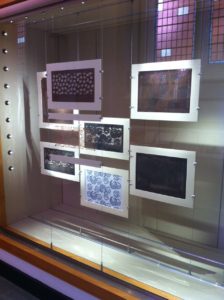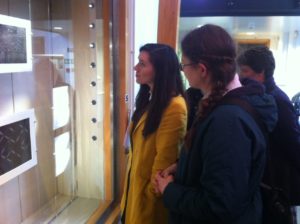Loan: ‘The Craft of the Japanese Stencil’, ULITA (2017)

MoDA holds one of the UK’s important collections of Japanese katagami stencils. Another significant collection can be found at ULITA, part of Leeds University.
In 2017, ULITA held an exhibition which celebrated the art of the Japanese stencil or ‘katagami’. These stencils were used for dyeing designs onto clothing ranging from everyday worker’s garments to the finest silk kimonos.
ULITA’s exhibition introduced the techniques of making and using the katagami, and explored their imagery. The stencils were created by drilling, punching and cutting detailed and intricate designs into mulberry paper. All of this was done by hand by skilled Japanese craftsmen before the end of the nineteenth century.
The katagami stencils were originally produced simply as tools; they were part of the process of indigo dying cloth. But more recently they have come to be appreciated as remarkable and beautiful objects in their own right.

The designs on the stencils amount to more than decoration. They have great significance within Japanese culture. They might evoke a season or express wishes for longevity and good fortune. In some cases they make reference to an entire folk story. The ULITA exhibition showed that every katagami has a story to tell about the fashion and culture of Japan at the time of its creation and use.
The exhibition was written and curated by guest Curator Dr Alice Humphrey, who has worked with the katagami collections in both ULITA and MoDA. MoDA lent a number of katagami from our collection, and our conservator Emma Shaw assisted with the conservation of objects for the exhibition.